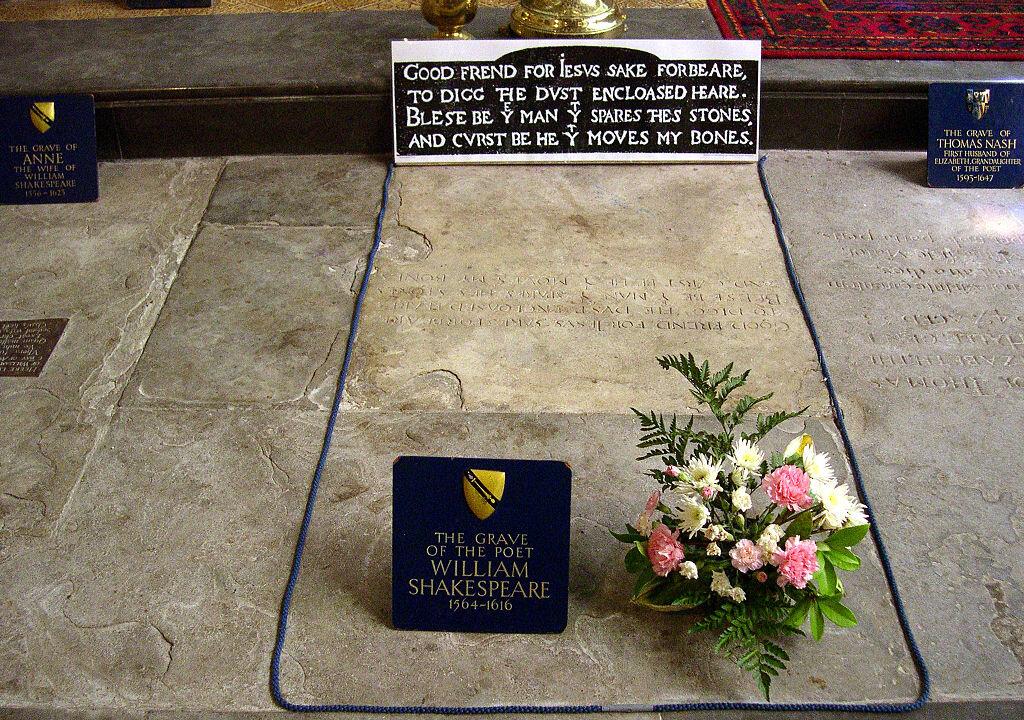Playwright William Shakespeare left a curse on his gravestone when he died in 1616 warning against tampering with his infinite rest: “Good friend for Jesus’ sake forbear, to dig the dust enclosed here. Blessed be the man that spares these stones, and cursed be he that moves my bones.” (This has been rendered in modern English for ease of reading, the spelling is different on the original stone.)
Shakespeare’s Grave Probed, Despite Curse
Have investigators found a loophole in Shakespeare’s curse?

William Shakespeare's grave at Holy Trinity Church in Stratford-on-Avon, England. David Jones/CC BY 2.0
|Updated:





